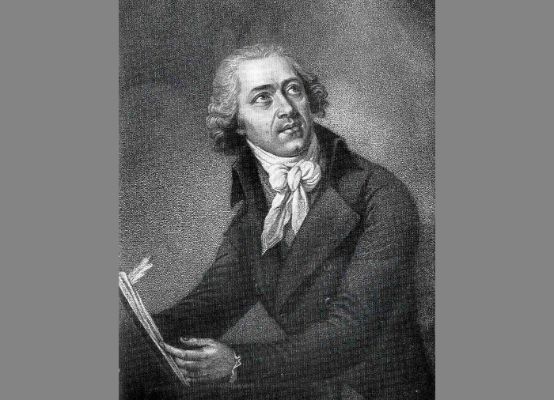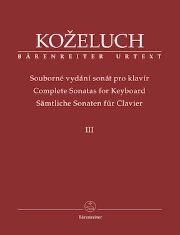Edition of the Koželuch sonatas completed
All 50 sonatas by Leopold Koželuch have only recently been published in an exemplary edition by Christopher Hogwood. They are extremely rewarding both pianistically and musically.

The Czech composer Leopold Koželuch, born in 1747, came from a family of musicians. He completed his training in Prague from 1768 and moved to Vienna in 1778. There he was active as a piano teacher with few pupils, even in the highest aristocratic circles of the empire, and as a prolific composer. He also owned a music shop and a music publishing house with connections to other publishers throughout Europe. Koželuch successfully offered his works to them.
They include not only piano music, but also chamber music, orchestral music, indeed all genres including operas, ballets and pantomimes. Unfortunately, however, most of his stage works have been lost. From 1781 onwards, he was regarded as Mozart's fiercest rival. From 1792, he succeeded in writing an opera or ballet every year on behalf of the imperial family, something that Mozart had been denied for the rest of his life. From 1802 until his death in 1818, he was ill and his productivity declined sharply. He had a strong influence on the young Schubert, to name but one, particularly with regard to unexpected harmonic turns in distant keys. After his death, he was completely forgotten.
Until recently, only seven piano sonatas were available in new editions. And now they are all available in an exemplary edition, supervised by none other than the English harpsichordist and world-famous conductor Christopher Hogwood; he died in 2014 and this was perhaps his last work alongside the publication of works by Handel, Purcell and Geminiani. The first two volumes were already reviewed here in 2011 (SMZ 9_2011, p. 32 f.). Good things take time.
As the level of difficulty in the early works is still significantly lower, they could be recommended for piano lessons from sonatina level upwards in 2011, and in some cases even for sight-reading. The later ones are more demanding. What has remained the same, however, is a skillful, manual piano style: they all sound much more virtuosic than they are to be played. What has also remained the same is the musical style, which can certainly be described as "lively and graceful", but which also offers emotional depth, not only in minor movements, as well as - within the framework of classical sonata form - inventive surprises of a harmonic and formal nature. It is therefore to be hoped that the four volumes will become an integral part of piano teachers' music libraries. The lack of fingerings is a pedagogical advantage.
Leopold Koželuch: Complete Sonatas for Piano, Urtext edited by Christopher Hogwood; vol. III: Sonatas 25-37, BA 9513, € 44.95; vol. IV: Sonatas 38-50, BA 9514, € 41.95; anthology Sonatas 1-50, BA 9515, € 140.00;Bärenreiter, Prague 2012 / 2015
In our dossier Bernhard Billeter uses two examples to explain the nature, style and significance of Koželuch's sonatas.








